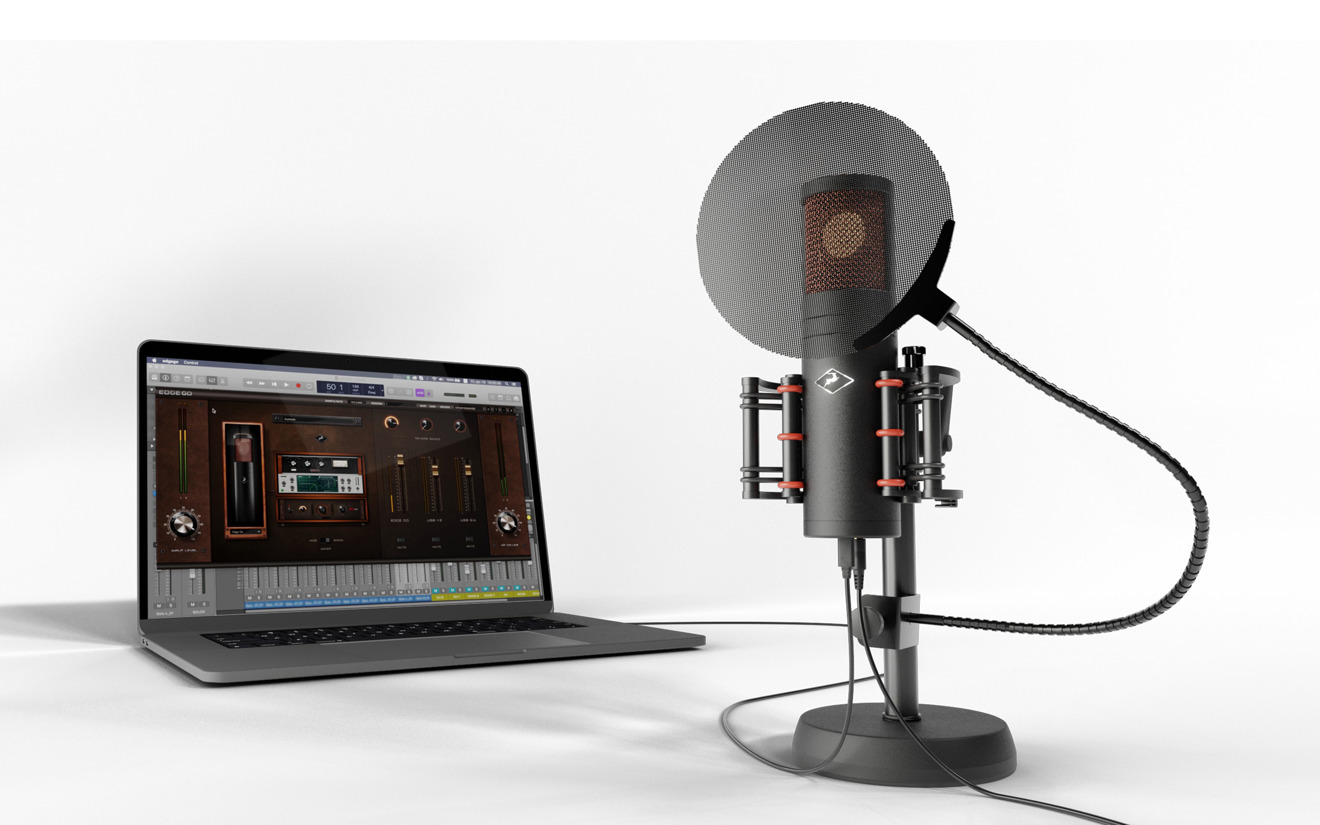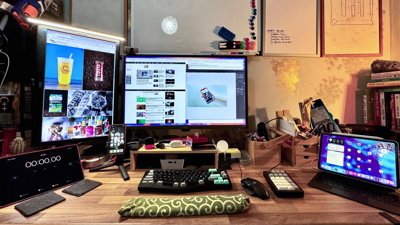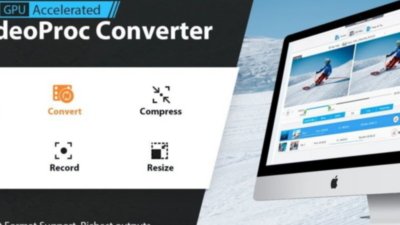Antelope Audio on Wednesday launched the Edge Go, a product it claims is the "world's first bus-powered modeling microphone," capable of running entirely off a Mac's USB-C port.
Using bundled software and integrated chips, the microphone can simulate both vintage microphones and studio effects processors, Antelope said. Some examples include mic brands like Tokyo, Berlin, and Vienna, and processors such as limiters, compressors, and expanders. The device has its own audio interface with A/D conversion and 192-kilohertz, 24-bit resolution.
With a mic model selected, people can adjust the pickup pattern to cardioid, omnidirectional, or any other style. Without emulation Antelope promises a "transparent, flat 20Hz-20kHz large-diaphragm sound."
Among preset effects are "Reel to Reel," "Telephone Effect," "Fan Noise Reduction" and more. The mic's chips allow it to offload effects processing from a Mac's CPU.
Antelope is selling the Edge Go for $1,595. It comes bundled with a shock mount, a metal mesh pop filter, an adjustable desktop mic stand, and a USB-C to USB-A cable if needed. A headphone jack on the mic allows for direct monitoring.
 Roger Fingas
Roger Fingas








 Christine McKee
Christine McKee
 Malcolm Owen
Malcolm Owen

 Sponsored Content
Sponsored Content

 Amber Neely
Amber Neely











7 Comments
It looks like a great little desktop bus-powered USB mic, but they have the decimal on the price in the wrong place, Move it over to the left one digit -- so that it's competitive with the Yeti -- and we'll talk.
Musician lovers
Call me weird, but as a 30 year media professional who has owned probably 50 mics over my career - from Neumann to AKG to Shure and beyond, here’s what I’d NEVER do—
presume to comment on the quality, utility, or value of a device until I had actually tested it for myself.
Yeah, it might be all hype and not worth squat. And that wouldn’t shock me.
OTOH, maybe it’s cracked some code for the actual digital modeling of the sounds or pickup characteristics of why many of us had a closet full of mics in the first place. This condenser works well on throaty female voices. This one better on clear sopranos. This other one has a great bite used on an alto sax with medium compression. And this dynamic kills on a close mixed kick drum with a nasty SPL.
The point is that any microphones actual utility only gets revealed via actual use. And right now, this thing has none. So arguing about how good or lame it might be is kinda stupid, IMO.
My 2 cents.
As a professional voice actor/narrator I could see this making a lot of sense and the cost of my microphone plus apogee duet is about this price. Of course, going this route means a single point of failure so ideally I'd buy two (gulp!) and I'm way too invested in my current setup to do that. It isn't a solution for everyone but I could see some great (albeit niche) use cases.